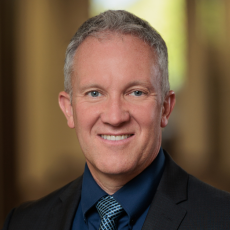Could you introduce us to the operations of Rare Element Resources?
Our Bear Lodge project is located in Northeast Wyoming, USA. Wyoming is a great state for mining, given its history in the sector and its present-day, open-minded, and pro-business attitude. Bear Lodge is a well-understood mineralized deposit with easy access to rail, power, roads, gas, and a skilled workforce. There are more than 500 core holes that have been drilled, totaling over 285,000ft, confirming the deposit is rich in the magnet materials essential for high-tech applications. In 2014, we completed a pre-feasibility study that showed a mine life of over 30 years.
Right now, we are focused on a $44 million demonstration project in the community of Upton, Wyoming, and are partnering with the US Department of Energy (DOE) to construct a processing and separation plant. We also have a strategic technology partner, General Atomics, with whom we developed our patented, proprietary technology that recovers high-purity ores more efficiently and environmentally friendly than current industry practices. Two successful pilot tests have been completed with an affiliate of General Atomics in Europe and show we can produce a 99.5% pure neodymium and praseodymium oxide. So, the task now is to confirm scalability and create the framework for commercial plant development while advancing the Bear Lodge Project into development.
Why are rare earths such an important raw material?
Rare earths provide vital inputs for a vast range of future-facing products. They are well-known for their unique magnetic, phosphorescent, and catalytic properties, which enable technologies like infrared absorption in night vision goggles, high-powered lasers, and the high-powered magnets you find in smartphones and computers. Thanks to these unique characteristics, rare earths can enhance the performance of other metals, meaning that they allow products to be smaller and more efficient. The amount of materials used in high-tech products is in fact very small but is almost always critical to the unit’s performance. A typical smartphone used seven rare earths for functions ranging from the colored screen to its speakers to the miniaturization of the phone’s circuitry.
In defense applications, they are used in satellite communications, guidance systems, and aircraft structures. Additionally, rare earths are crucial in the green technologies that will be essential to reaching our carbon reduction goals, such as electric cars and direct-drive wind turbines.
What is your strategy given China’s monopoly in the rare earths market today?
China truly is dominant in the market. Last year, over 65% of rare earths were mined in China, but more importantly, over 90% of the magnet materials were refined and produced there. Our strategy is two-fold. First, we have our collaboration with General Atomics, which brings us access to some of the brightest minds in the field today along with their influential position in the high-tech industry—their relationships were key in getting the US government involved in our project. The second aspect of our strategy is to develop a project that is well-aligned with US government strategic interests.The second aspect of our strategy is to develop a project that is well-aligned with US government strategic interests. The government has completed studies that say that the country is at risk economically, environmentally, and security-wise because it does not have a secure source of several key minerals, including rare earth elements. Several programs have been developed aimed at addressing these issues.
Under these initiatives, our company is developing our demonstration plant, and the DOE committed to paying approximately 50% of the anticipated costs. The purpose is to confirm the commercial viability and environmental advantages of our innovative separation and recovery technology. We intend to deploy a similar strategy to advance the Bear Lodge mineral deposits. Addressing the risks China’s rare earth monopoly poses to our nation not only requires development of projects like Bear Lodge and technology innovation like our proprietary recovery process, but ongoing collaboration between industry and government.
Would you consider the US permitting process more of a facilitator than an obstruction to rare elements mining?
The challenge with any mining in the US is indeed permitting. Many operators face lengthy, costly, and inefficient permitting processes that result in businesses going to countries with simpler processes. This has forced US manufacturers to rely on imports of key minerals. We have clear government support through tax incentives, loan programs, grants, and so on but they are irrelevant if a mining company cannot get its mine permitted. I think this is a reason we are seeing the US Congress paying so much attention to permitting reform today.
Canada, for instance, has a supportive regulatory environment that includes agreements between mining companies, indigenous communities, and governments. In the US, mining companies provide a significant source of revenue to state and local governments, supporting communities, contributing to educational initiatives, local charities, and so on.
Mining companies also invest heavily in R&D to develop new technologies and processes to minimize environmental impacts, which is what makes the US one of the most environmentally responsible mining countries in the world.
However, the key differentiator between Canada and the US is the efficiency of permitting.
How difficult is it to gather the right talent for the development of your cutting-edge processing and separation technologies?
Our collaboration with General Atomics brings what are clearly some of the brightest minds in the field to focus on our technology. They designed a zero-discharge process that recycles most major chemicals leading to reduced costs and waste compared to current practices. They have augmented the process with one-of-a-kind monitoring software to optimize each stage of the process. General Atomics has created a space where talented people are allowed to think creatively, explore, and push the capabilities of this new technology.
What would you say is your main objective for the next five years?
In the near term, we will demonstrate the effectiveness and efficiency of our innovative extraction technology. We plan to use the critical data that comes out of that demonstration plant in order to progress the commercialization of our new technology. Longer-term, our main goal will be to advance the Bear Lodge Project into production allowing us to build the cornerstone for a secure, US-based rare earth supply chain to address the critical needs of the US for military, green and high-tech applications.





